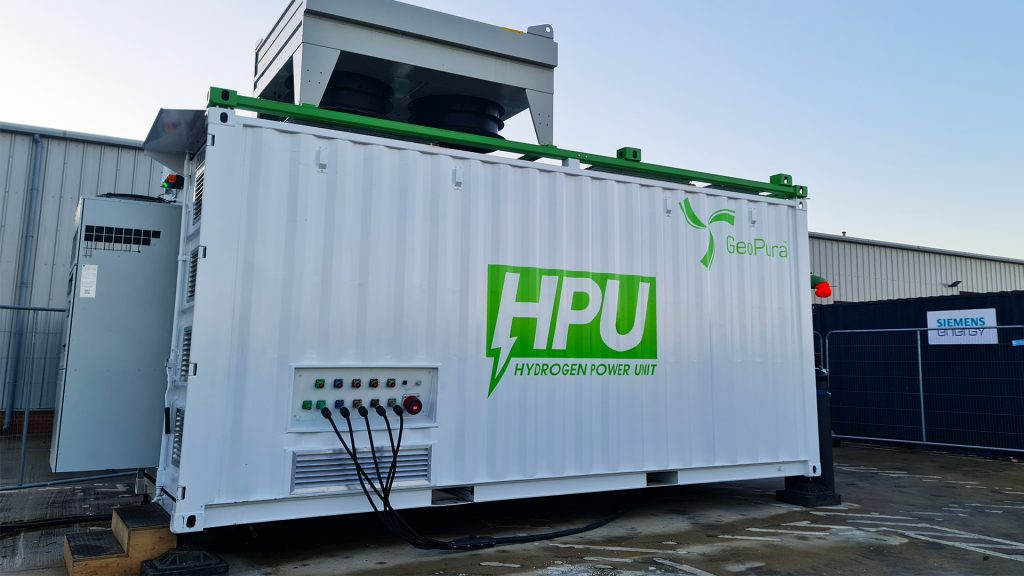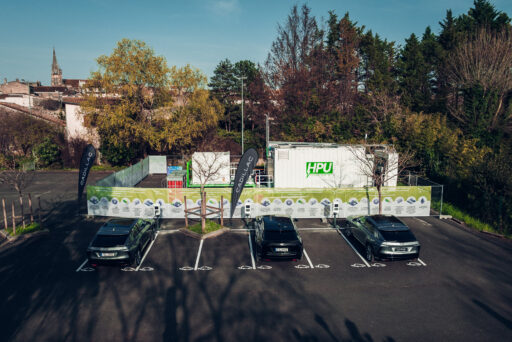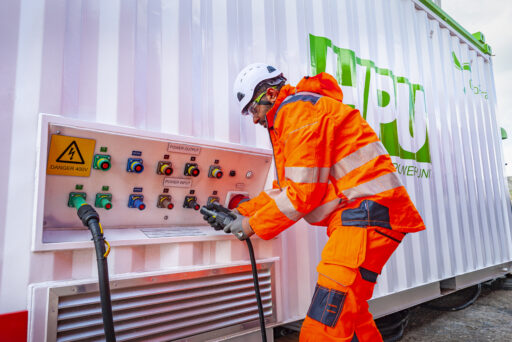- Siemens Energy, Fortescue Future Industries (FFI) and GeoPura are developing the prototype.
- Prototype will use ammonia to deliver 200kg of hydrogen a day – enough to power around 5-10 hydrogen fuel cell-electric buses.
- Netflix, BBC and HS2 likely to benefit from hydrogen produced.
A Siemens Energy led consortium has begun work in Newcastle, UK on a new £3.5m ammonia cracker prototype designed to produce green hydrogen at industrial scale and help tackle climate change and reduce carbon emissions.
The ammonia cracker system will provide the potential to produce green hydrogen at scale, wherever and whenever it is needed. The system will be designed to deliver high-purity hydrogen, suitable for PEM fuel cell use, using FFI’s Metal Membrane Technology (MMT) purification process. The MMT process developed by FFI and Australia’s national science agency, the Commonwealth Scientific and Industrial Research Organisation (CSIRO) is key to producing high-purity hydrogen from the ammonia cracking process. It selectively filters the hydrogen whilst blocking other gases, allowing it to be used as a fuel and converted as needed, at the time of re-fuelling.
“We have just 13 years to deliver a net-zero electricity grid for the UK. Time is running out and we can’t do this alone. This innovative green ammonia cracker could be a game-changer for scaling up the green hydrogen industry – an important step to drive the energy transition,” said Steve Scrimshaw, VP at Siemens Energy UK & Ireland and a member of the UK Government’s Hydrogen Advisory Council.
Ammonia has a high hydrogen density and is readily transportable in bulk. It can be used for storing large amounts of hydrogen in a liquid form that builds on existing global supply chain infrastructure. The traditional process of producing ammonia has used “grey” or “black” hydrogen from either natural gas or coal. The Haber-Bosch process used to produce “green” ammonia from green hydrogen, using renewable power, does not result in CO2 emissions during the process. The cracker and MMT, if successful, will allow the green hydrogen to be recovered and delivered as high-purity hydrogen at the point of use, with a focus on mobility and off-grid power applications. The technology could then be scaled up for future markets, including industry, heat, and grid-scale power generation.
Siemens Energy have proven experience of innovation with ammonia. The team previously led a collaborative project at the Rutherford Appleton Laboratory (RAL) in Oxfordshire. The £1.5m proof-of-concept facility showcased an ammonia-based energy storage system that turned electricity, water and air into ammonia without releasing carbon emissions. The ammonia is stored, before being used for electricity generation. Ammonia cracking was not included at the pioneering RAL demonstrator so the ammonia cracker prototype fills a supply chain gap in the technology.
The UK Government estimates that hydrogen could make up to one third of the UK’s energy mix by 2050 but there are challenges with hydrogen storage and transport that need to be addressed to make this viable. The £3.5m ammonia cracker prototype aims to help tackle these challenges.
The partnership is a true collaboration between Siemens Energy, Siemens Energy Ventures, FFI, GeoPura, and Innovate UK. Siemens Energy and FFI are providing engineering expertise and innovative technical solutions. GeoPura will provide onsite management, and as the off-taker will be taking the hydrogen product from the prototype ammonia cracker system for use in their innovative fuel cell power generation technology.
GeoPura plans to use this hydrogen to supply Hydrogen Power Units (HPUs). HPUs are used as a replacement for heavy polluting diesel generators as an ‘off-grid’ solution to provide zero emission power to a wide range of industries including TV production, such as Netflix and BBC’s Winterwatch and construction projects, including HS2.
Fortescue Future Industries CEO Mark Hutchinson added: “The research and development of technology like this is key to the success of green hydrogen globally. There is an overwhelming demand for supply of green hydrogen, particularly in Europe, and transport is central to ensuring that supply. We know that green hydrogen can be transported long distances as green ammonia, and, if successful, ammonia cracking coupled with MMT means that you can convert it as you need to, at the point of use. The work being done as part of this partnership stands to help make green ammonia a globally traded hydrogen carrier and fuel not just for the future but for today.”
Editors’ Notes:
For interview and filming opportunities contact Danielle Turton at Danielle.turton@siemens-energy.com





